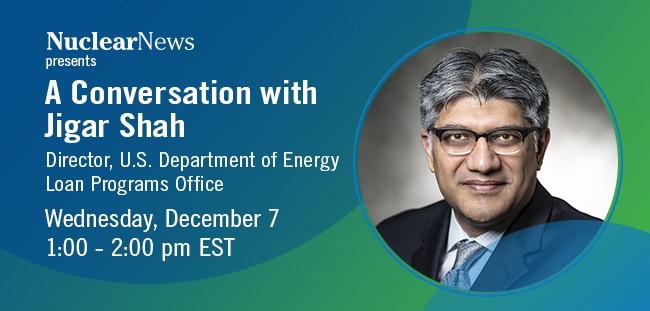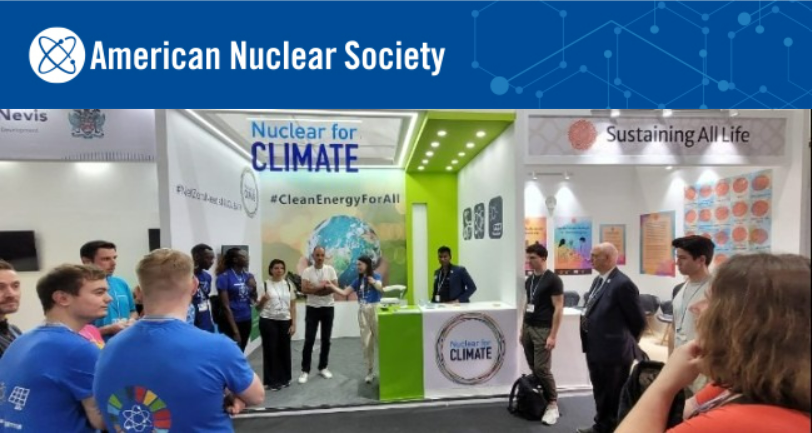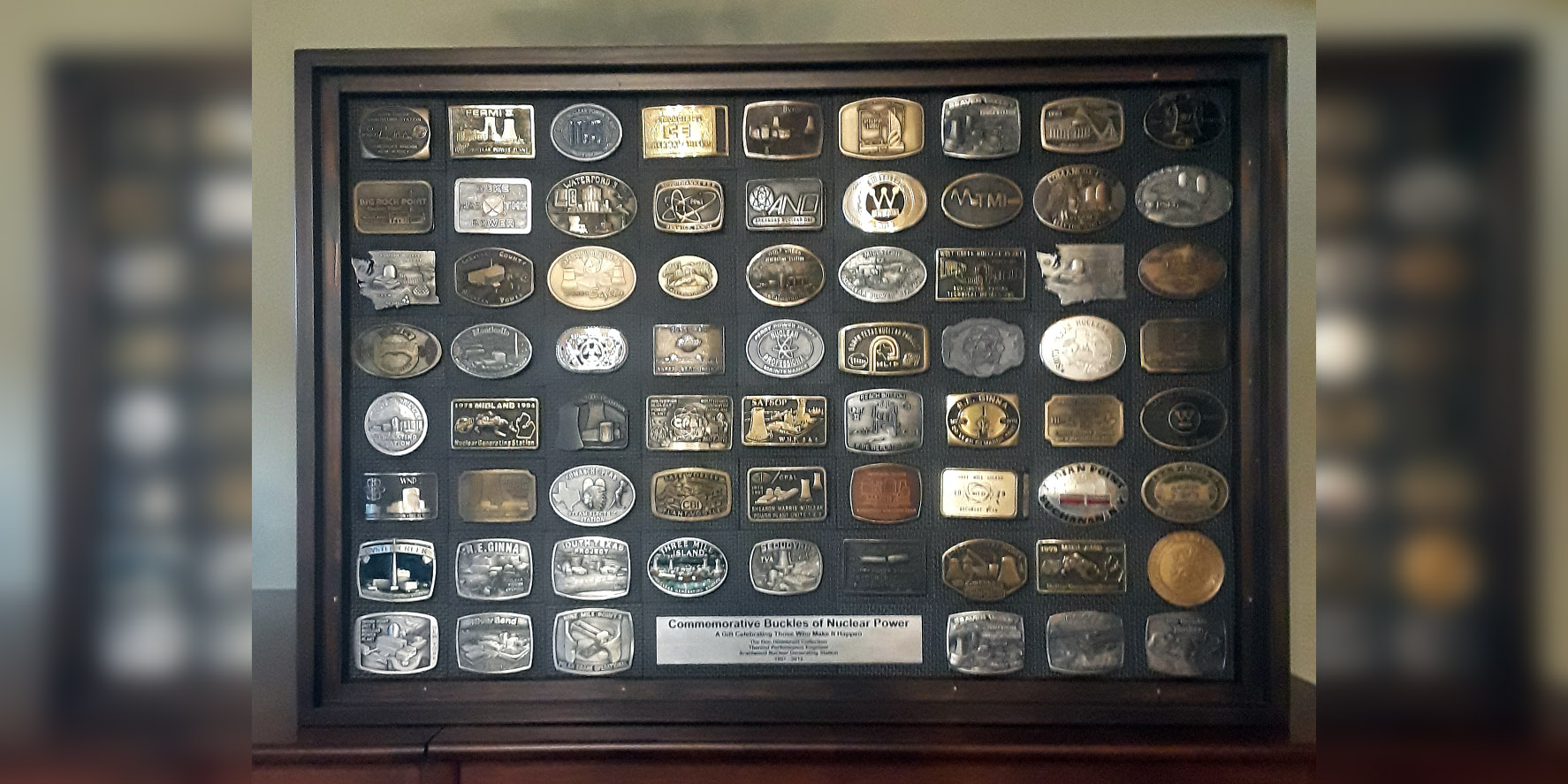A room full of displays at the Art of the Reactor exhibit. (Photo: IIT)
Nuclear power plant cooling towers are easily recognizable for their familiar hyperboloid shape. But an art exhibit running at the Illinois Institute of Technology in Chicago aims to give visitors a different perspective.
The Art of the Reactor, an exhibit by the National Museum of Nuclear Science and History and hosted by IIT’s Lewis College of Science and Letters, opened on November 4 and runs until Sunday, December 4 at Hermann Hall on the IIT campus.
Attendees at the Nuclear for Climate booth during the COP27 conference.
COP27, the 2022 United Nations climate change conference, is under way this week in Sharm el-Sheikh, Egypt. A delegation from the American Nuclear Society has traveled there to participate in Nuclear for Climate’s #NetZeroNeedsNuclear advocacy campaign. Nuclear for Climate, cofounded by ANS, is a grassroots organization made up of nuclear professionals and scientists from over 150 associations worldwide.
One of two cases that display the impressive belt-buckle collection.
Collecting belt buckles from nearly every nuclear power plant in the U.S. wasn’t the goal for Don Hildebrant when he obtained his first one. Over time, it just turned out that way.
One day years ago, Hildebrant came across a buckle from the nuclear plant where he worked, and it seemed before he knew it, he had collected more than 250 of them—some from plants that were never even completed. “When you look at the collection, you will see an interesting story of where nuclear power has been, and how far it has come,” he said.
A screenshot of the Interactive Isotopes App from the ANS website depicting U-235 and its decay chain. (Graphic: ANS)
In the summer of 2019, three students from the University of South Carolina–Aiken (USCA) had an idea to digitize the isotope. Wei Zheng, Drake Jones, and Joseph Taylor set out to design an app that would be an interactive one-stop shop for information about any isotope—number of protons and neutrons, whether it is stable or radioactive, its natural abundance on earth, and even its uses. From these ideas, the Interactive Isotopes App began to take shape.
The app’s launch was disrupted by the COVID-19 pandemic; although it was complete after three years of work and development, the creators sat on it. On October 12, the app at long last went live on the ANS website.
A town in Puerto Rico flooded as a result of the recent hurricane.
Hurricane Fiona slammed into Puerto Rico on September 18 with powerful winds and massive amounts of rain, resulting in mudslides, flooding, loss of power and water, wrecked homes and businesses, destroyed roads and bridges, and some deaths. Students from the American Nuclear Society student section at the University of Puerto Rico—Mayagüez (ANS UPRM) and other student groups have responded by distributing bottled water, nonperishable food items, cooked meals, first aid, personal hygiene items, flashlights with batteries, and other supplies, and by raising awareness of community needs and asking for monetary and food donations. In addition, ANS has established a fundraising drive for monetary donations to support students’ efforts in assisting ANS UPRM members in Mayagüez. The donations are being used to meet a number of needs during this challenging time.
Students participate in the “Nuclear Mythbusting Pitch Competition,” hosted by the ANS YMG. (Photo: Julie McCallum)
To kick off the new academic year, the ANS Young Members Group hosted the online “Nuclear Mythbusting Pitch Competition” on September 22. Students competed in debunking nuclear misconceptions and misrepresentations in popular culture. While having fun and winning prizes, they set the record straight regarding nuclear science and technology.
 In a follow-up to A Step-by-Step Guide to Nuclear Innovation Policy, which was released by think tank Third Way in 2016, the Fastest Path to Zero Initiative of the University of Michigan has now published “Young Carla,” an eponymous “prequel” about a fictional nuclear engineering student. Carla was introduced in the 2016 report as a graduate nuclear engineering student with an idea for a new type of nuclear energy technology. The report explained how wise policy decisions in the United States could improve government-private partnerships so that Carla’s idea could be commercially demonstrated.
In a follow-up to A Step-by-Step Guide to Nuclear Innovation Policy, which was released by think tank Third Way in 2016, the Fastest Path to Zero Initiative of the University of Michigan has now published “Young Carla,” an eponymous “prequel” about a fictional nuclear engineering student. Carla was introduced in the 2016 report as a graduate nuclear engineering student with an idea for a new type of nuclear energy technology. The report explained how wise policy decisions in the United States could improve government-private partnerships so that Carla’s idea could be commercially demonstrated.






.png)








